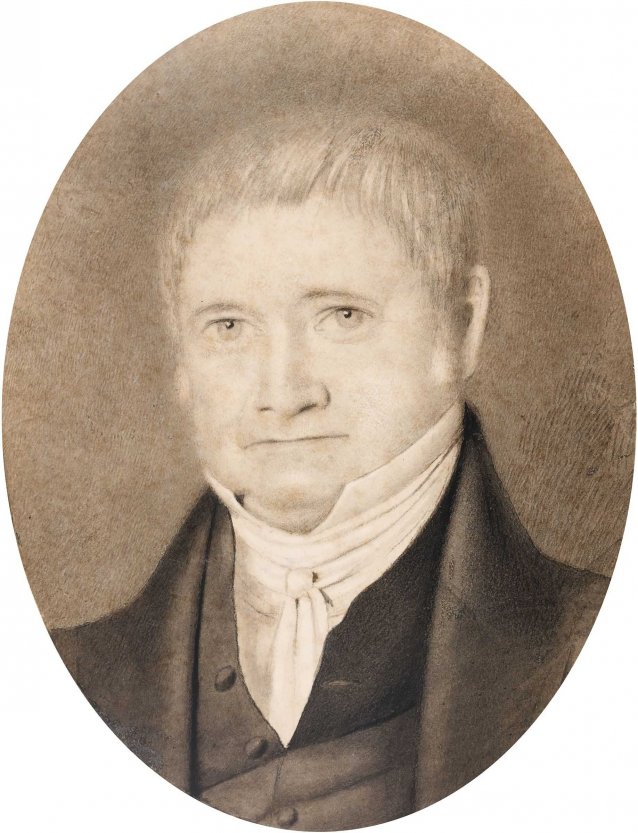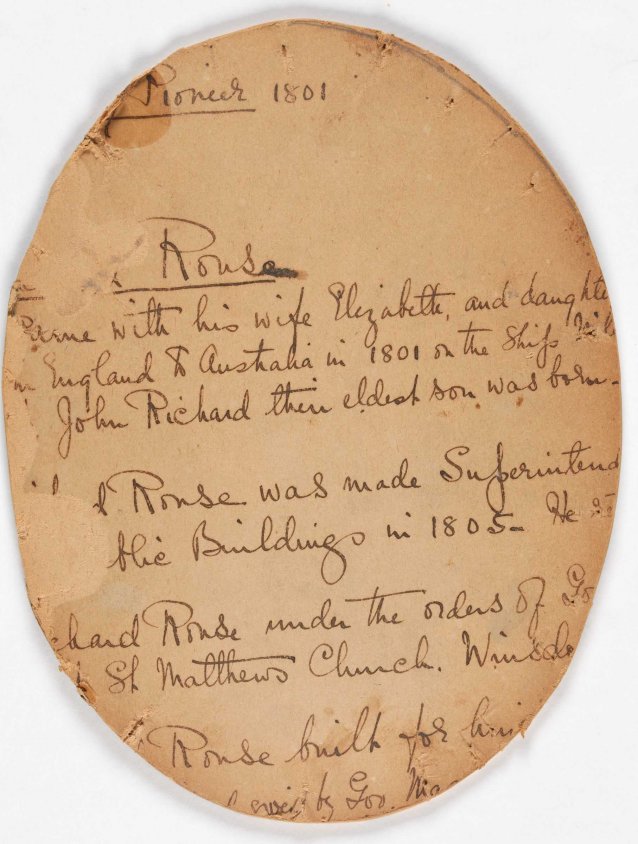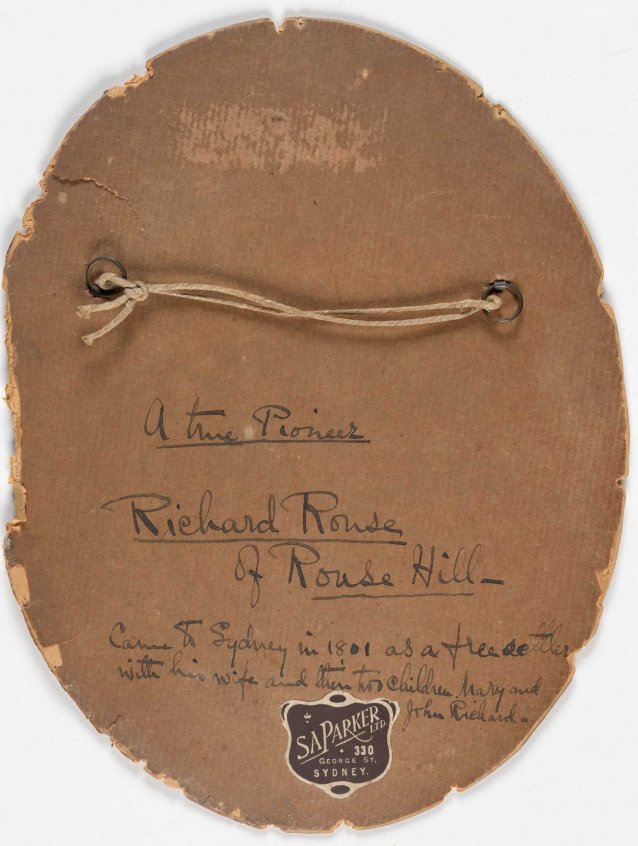Richard Rouse (1774–1852), grazier and landowner, came to New South Wales in 1801 as a free settler with his wife Elizabeth (née Adams, 1772–1849) and the first two of their nine children. In 1805, having taken up a land grant on the Hawkesbury, he was appointed Superintendent of Public Works and moved to Parramatta. His loyalty to the deposed governor William Bligh saw him removed from this position. He was reinstated by Lachlan Macquarie, and oversaw the construction of many public buildings including the Parramatta Hospital and renovations to Government House. His loyalty to Macquarie was rewarded with another land grant of 450 acres near Windsor. This property, Rouse Hill, became the cornerstone of the family’s farming operations which were extended in the 1820s by a grant of 4 000 acres (later named Guntawang) on the Cudgegong River, near Gulgong. By 1828 Rouse owned land in Bathurst, Mudgee, Wellington, Lithgow and the Hunter Valley, as well as properties in Richmond and Penrith. With the assistance of his sons, Rouse ran these properties from Rouse Hill and bred sheep, cattle and thoroughbreds. He was described as ‘an old and much respected colonist’ on his death at the age of seventy- nine, ‘a devoted family man, loyal member of the Church of England, a hard-working and honest public servant, and a very efficient grazier’.
These portraits are copies of those commissioned from artist William Griffith in 1847. Trained in France, Griffith (c. 1808–1870) came to the colony in 1840. He married ten days after his arrival and with his wife, Susan, moved to Parramatta, where he worked as a teacher at the King’s School and presumably at the girls’ school established by Susan in 1841. Griffith also had success as a portraitist and by 1847 was considered ‘one of the best painters in the colony.’
Gift of Pamela Glasson 2009
Collected by Leila Haigh (nee Rouse)
The National Portrait Gallery respects the artistic and intellectual property rights of others. Works of art from the collection are reproduced as per the
Australian Copyright Act 1968 (Cth). The use of images of works from the collection may be restricted under the Act. Requests for a reproduction of a work of art can be made through a
Reproduction request. For further information please contact
NPG Copyright.


















